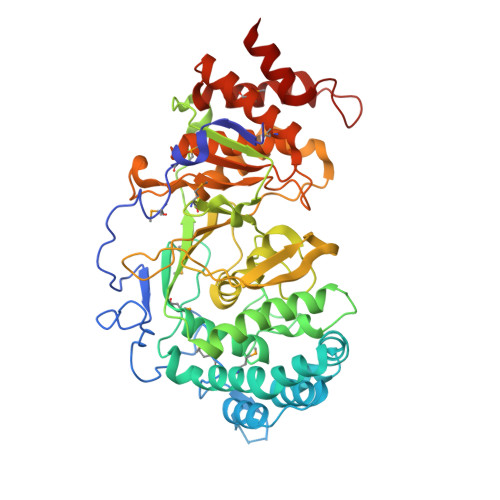Crystallographic and biochemical analysis of the mouse poly(ADP-ribose) glycohydrolase.
Wang, Z., Gagne, J.P., Poirier, G.G., Xu, W.(2014) PLoS One 9: e86010-e86010
- PubMed: 24465839
- DOI: https://doi.org/10.1371/journal.pone.0086010
- Primary Citation of Related Structures:
4FC2, 4N9Y, 4N9Z, 4NA0, 4NA4, 4NA5, 4NA6 - PubMed Abstract:
Protein poly(ADP-ribosyl)ation (PARylation) regulates a number of important cellular processes. Poly(ADP-ribose) glycohydrolase (PARG) is the primary enzyme responsible for hydrolyzing the poly(ADP-ribose) (PAR) polymer in vivo. Here we report crystal structures of the mouse PARG (mPARG) catalytic domain, its complexes with ADP-ribose (ADPr) and a PARG inhibitor ADP-HPD, as well as four PARG catalytic residues mutants. With these structures and biochemical analysis of 20 mPARG mutants, we provide a structural basis for understanding how the PAR polymer is recognized and hydrolyzed by mPARG. The structures and activity complementation experiment also suggest how the N-terminal flexible peptide preceding the PARG catalytic domain may regulate the enzymatic activity of PARG. This study contributes to our understanding of PARG catalytic and regulatory mechanisms as well as the rational design of PARG inhibitors.
- Department of Biological Structure, University of Washington, Seattle, Washington, United States of America.
Organizational Affiliation:



















